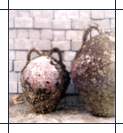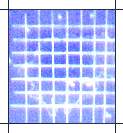




Çamaltı I Wreck
..
Marmara Sea Underwater Discoveries
 Marmara Sea (Ancient Propontis), which is located in the northwest of Turkey has always been the passageway between the countries of the Mediterranean and Black Sea and thus has an especially wide selection of archaeological remnants. 16 archaeological sites have been located around the islands in the Marmara Sea (Ancient Prokonessos) since 1993, proving this richness. 13 of them are shipwrecks, 2 of them amphora kilns (Medieval times) and 1 mound settlement from BC 3200-1100.
Marmara Sea (Ancient Propontis), which is located in the northwest of Turkey has always been the passageway between the countries of the Mediterranean and Black Sea and thus has an especially wide selection of archaeological remnants. 16 archaeological sites have been located around the islands in the Marmara Sea (Ancient Prokonessos) since 1993, proving this richness. 13 of them are shipwrecks, 2 of them amphora kilns (Medieval times) and 1 mound settlement from BC 3200-1100.
 Among these wrecks, The ÇAMALTI BURNU I Wreck, dated AD 13th century, has been chosen to be excavated for several reasons : Archaeological, historical and economical.Nothing is known of the ship building technology of this period, and the cargo of The ÇAMALTI BURNU I Wreck (the last amphoras, -ceramic containers, of the sea trade), has not yet been investigated in any way.
Among these wrecks, The ÇAMALTI BURNU I Wreck, dated AD 13th century, has been chosen to be excavated for several reasons : Archaeological, historical and economical.Nothing is known of the ship building technology of this period, and the cargo of The ÇAMALTI BURNU I Wreck (the last amphoras, -ceramic containers, of the sea trade), has not yet been investigated in any way.

The ÇAMALTI BURNU I wreck, dated 13th century, is located in a bay approaching the Cape of ÇAMALTI, just over 30 m. south of the rocky landscape. 
It has been chosen for several reasons : archaeological, historical and economical. Nothing is known of the ship building technology of this period. The archaeological evidence would contribute immeasurably to a better understanding of commercial activities, otherwise known only from documentary sources. The cargo itself has not yet been investigated in any way. The cargo amphoras of the ÇAMALTI BURNU I wreck were the last ceramic containers in the sea trade before they were replaced with wooden barrels. The ship’s cargo has settled in three pockets at depths of between 20 and 32 m on the sloping sandy bottom.
 Amongst the first group, at about a depth of 21 m., are the small size of type IV amphoras while at a depth of about 25 m. there is a group of medium sized amphoras, and further down, at about 32 m., are large amphoras; they seem to indicate where the hull would have been. On this wreck were also found three broken anchors (two ‘Y’ one probably ‘T’ type).
Amongst the first group, at about a depth of 21 m., are the small size of type IV amphoras while at a depth of about 25 m. there is a group of medium sized amphoras, and further down, at about 32 m., are large amphoras; they seem to indicate where the hull would have been. On this wreck were also found three broken anchors (two ‘Y’ one probably ‘T’ type).
Daha fazla bilgi için www.nautarch.org